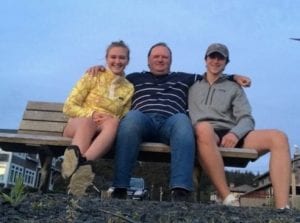Heart This Place – My Seattle
To celebrate historic preservation from home, we have launched Heart This Place – a new blog series from Historic Seattle staff. Each post will feature a different place that is significant to a member of our staff. For our final installment, Director of Preservation Services Eugenia Woo shows us her favorite views in Seattle:
My first time in Seattle was in 1991 as a visitor; I fell in love with the city and its environs instantly. On this visit, I went full-on tourist. Space Needle! Underground Tour! Pike Place Market! Mount Rainier! I loved it and wanted more. The unbeatable natural setting combined with its urban, yet still small town feel, and quirkiness called out to me. I knew I needed to come back and experience the Pacific Northwest more fully.
So, in September 1993, I drove my 1980 beige Volvo DL (aka “The Tank”), the family car that I learned how to drive in, from my hometown of Los Angeles to Seattle. After spending a hot and humid summer in Washington, DC as an intern, I was ready for Seattle weather. I’m one of those freaks of nature who loves rain. What brought me to the Pacific Northwest was graduate school in urban planning (with a focus on preservation planning) at UW. I remember learning about urban villages (so quaint sounding, right?), density, and growth management. Seattle was an ideal living laboratory for urban planning students to study. So many great neighborhoods and communities, each having its own history, culture, and character. Why would anyone want to destroy that? Little did I know then that I would spend such a large part of my professional life helping to fight save meaningful places that matter in this city.
It has now been 27(!) years since I first moved to Seattle (with a two-year stint back in L.A. in the late 1990s when I learned to love the City of Angels—I had to move away to really appreciate it). Over the years, my fondness for Seattle grew to encompass a great appreciation for the entire state, from small towns and rural areas to the mid-sized cities of Tacoma and Spokane. I have had the pleasure of traveling to and through all 39 counties in Washington State (logging A LOT of miles on my MINI Cooper). Whenever travel goes back to pre-COVID ease, I highly recommend exploring this amazing state. All of it. You might even see my husband and me on the backroads! Closer to home, I look forward to resuming my urban sleuthing of Seattle neighborhoods (documenting with photographs along the way), something I have done since my first visit in the early ’90s.
This brings me to my photo essay of some select favorite views in Seattle. No matter how long I’ve lived here or how cynical or jaded I may get lamenting my “lost” Seattle, nothing makes me happier than seeing the Space Needle, the Public Market neon sign, Smith Tower, or Mount Rainier. The Space Needle and Mount Rainier in particular just pop up out of nowhere at times—there’s always a new view of each that is unexpected. Fortunately, these icons are here to stay because they are landmarks or part of a historic district (well, Mother Nature will decide the mountain’s fate, but it won’t disappear entirely).
Enjoy!
All photos courtesy of Eugenia Woo. Click to enlarge:

View of Belltown and downtown from the Space Needle, 2010. (I’ve been taking views of the city from the top of the Space Needle since 1991.)
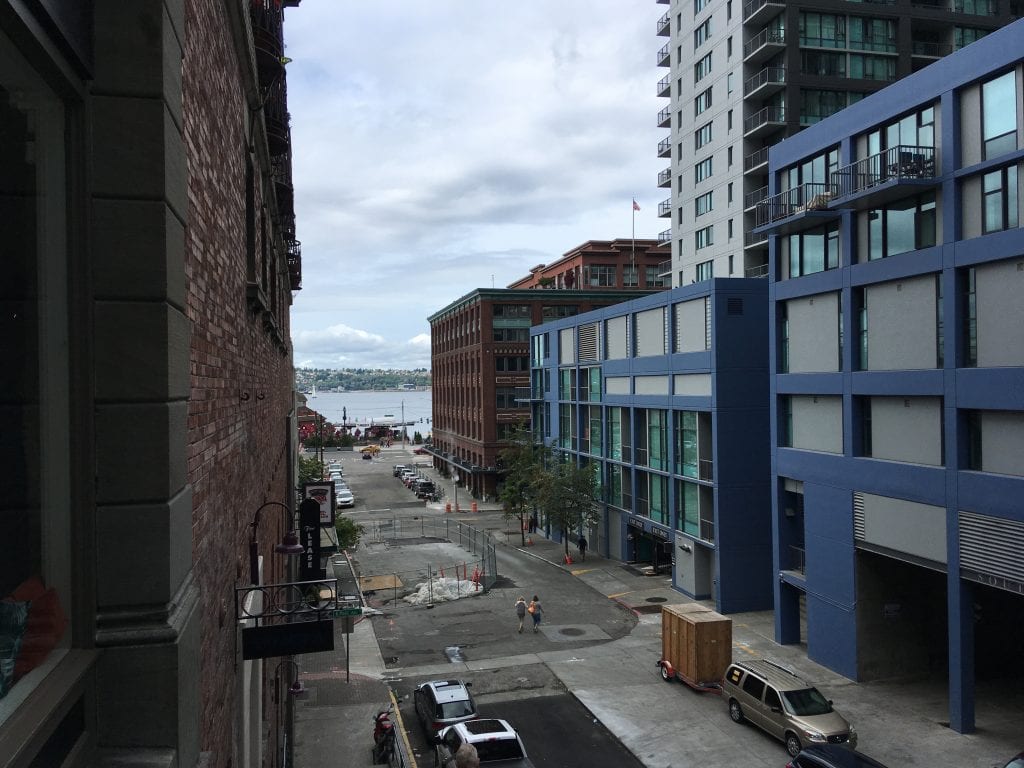
Seneca Street looking west from First Avenue, a reopened view after the removal of the Alaskan Way Viaduct and the Seneca Street offramp, Summer 2019.
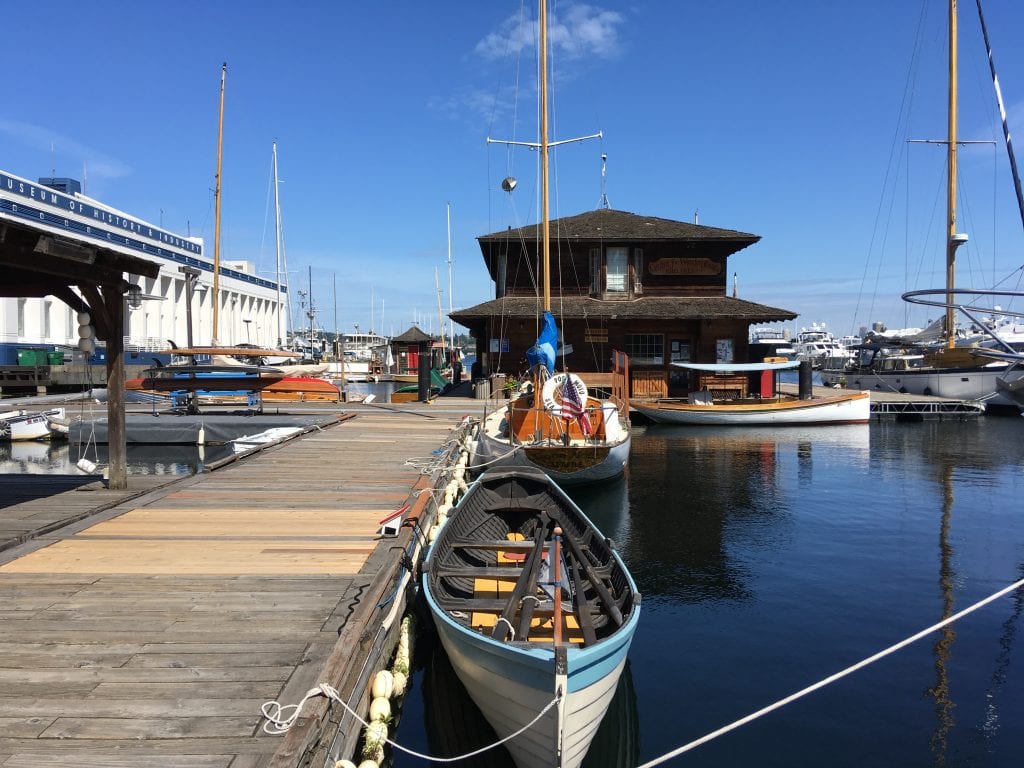
Seattle’s maritime heritage is on display on Lake Union in this spectacularly beautiful summer day in 2019.
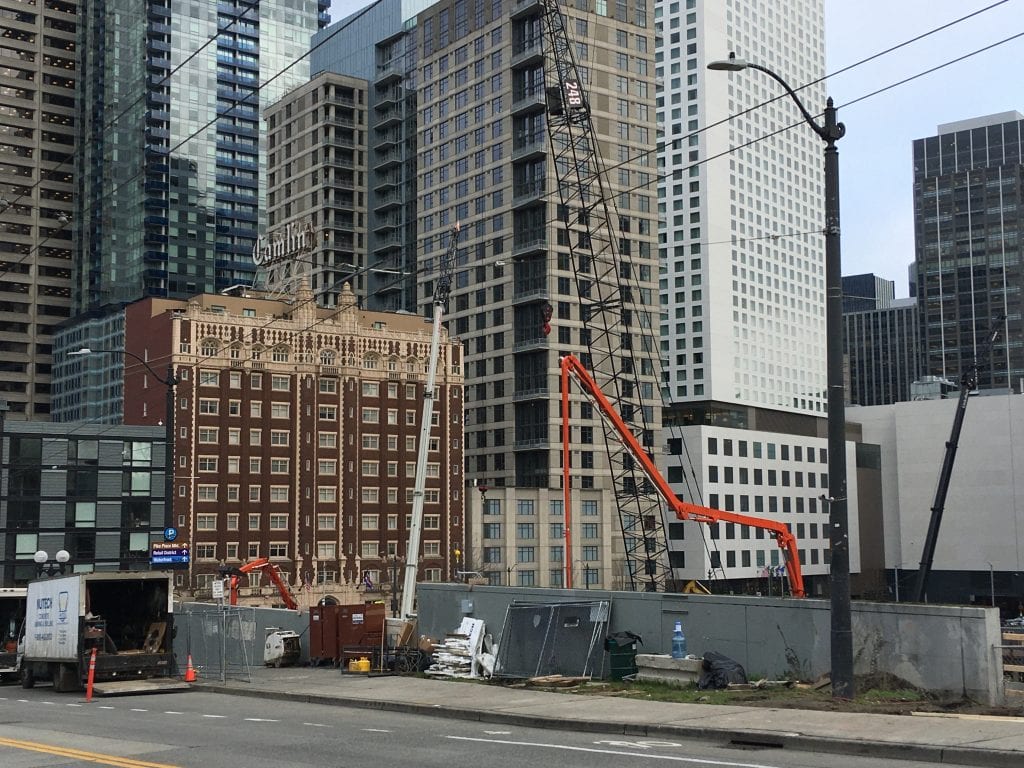
This view of the Camlin from the Paramount Theatre (December 2019) will no longer be visible once the Washington State Convention Center expansion is completed.
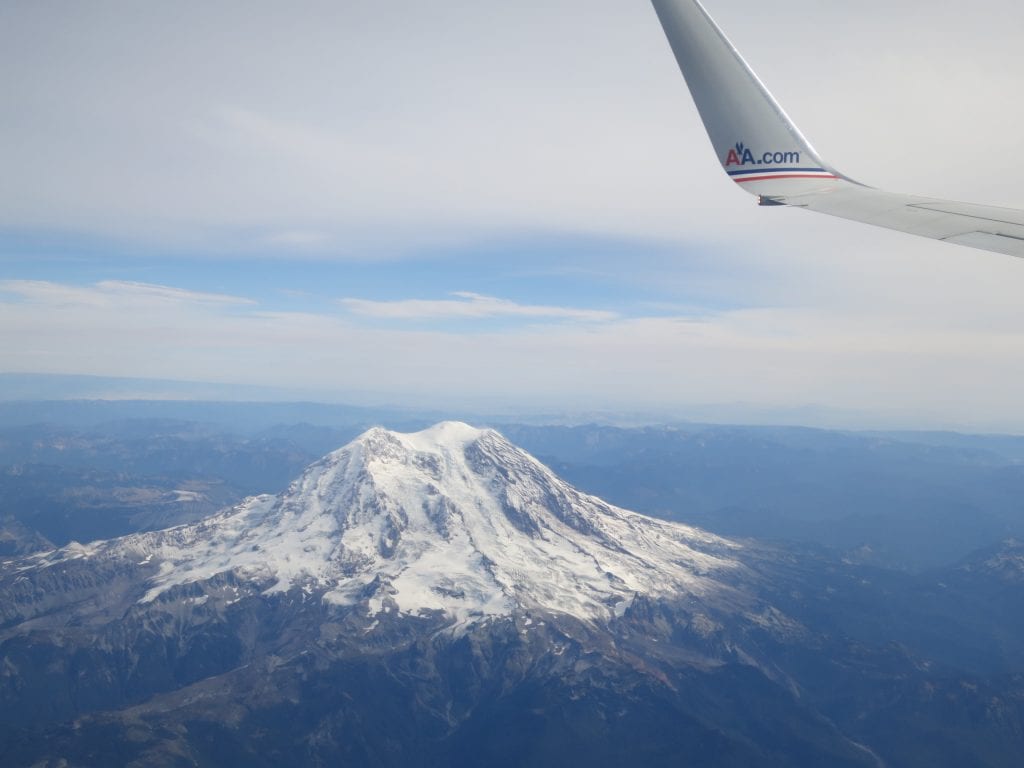
View of Mount Rainier from a plane. I choose my seat for maximum view opportunities of the Cascades when I fly.

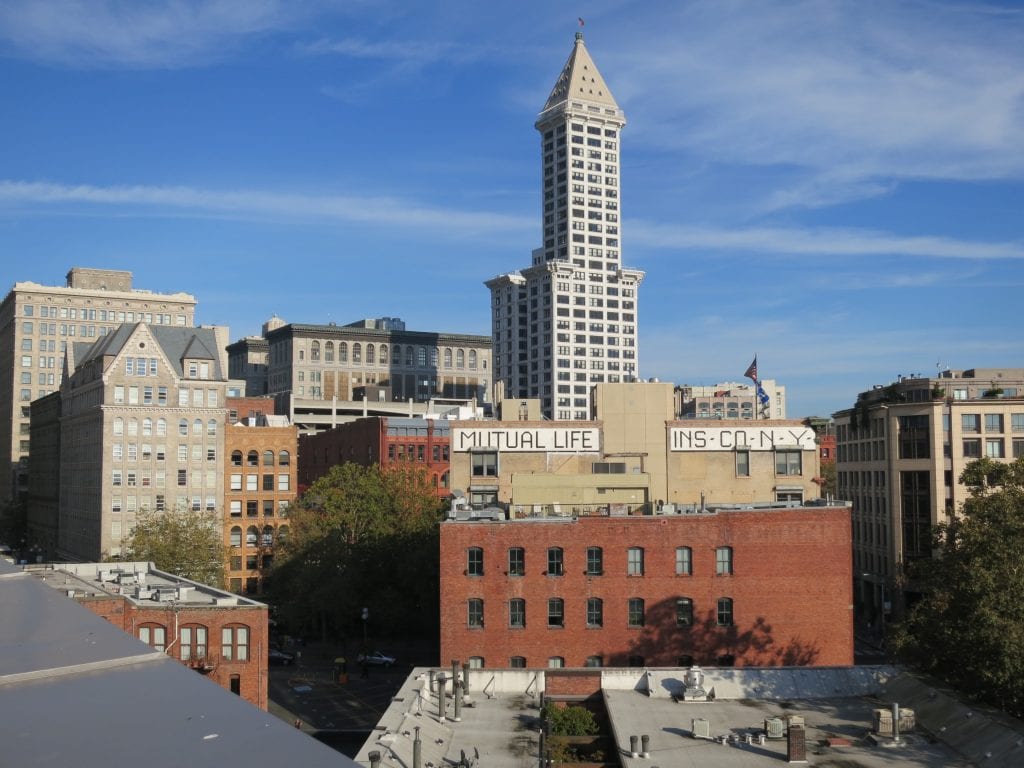
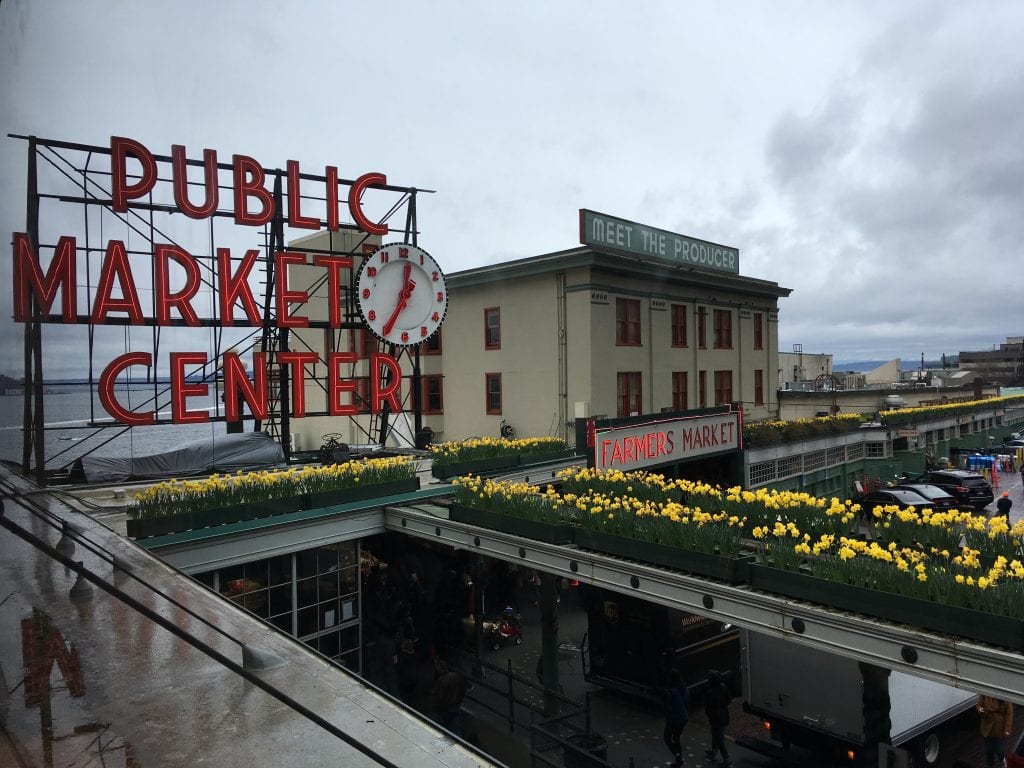
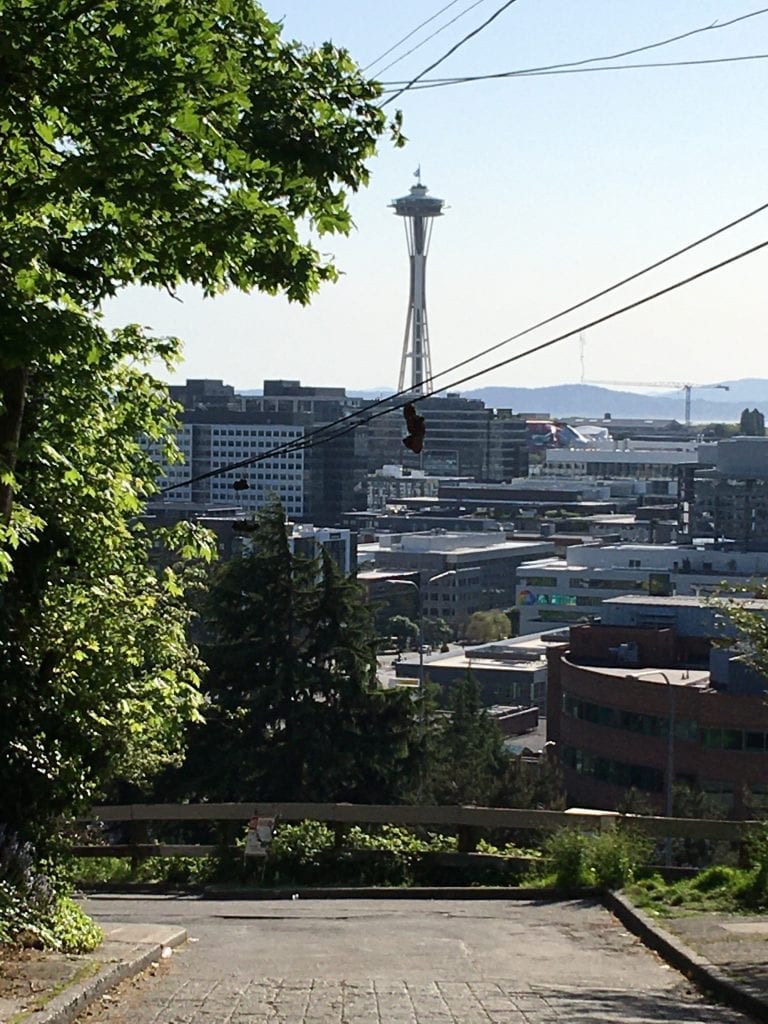
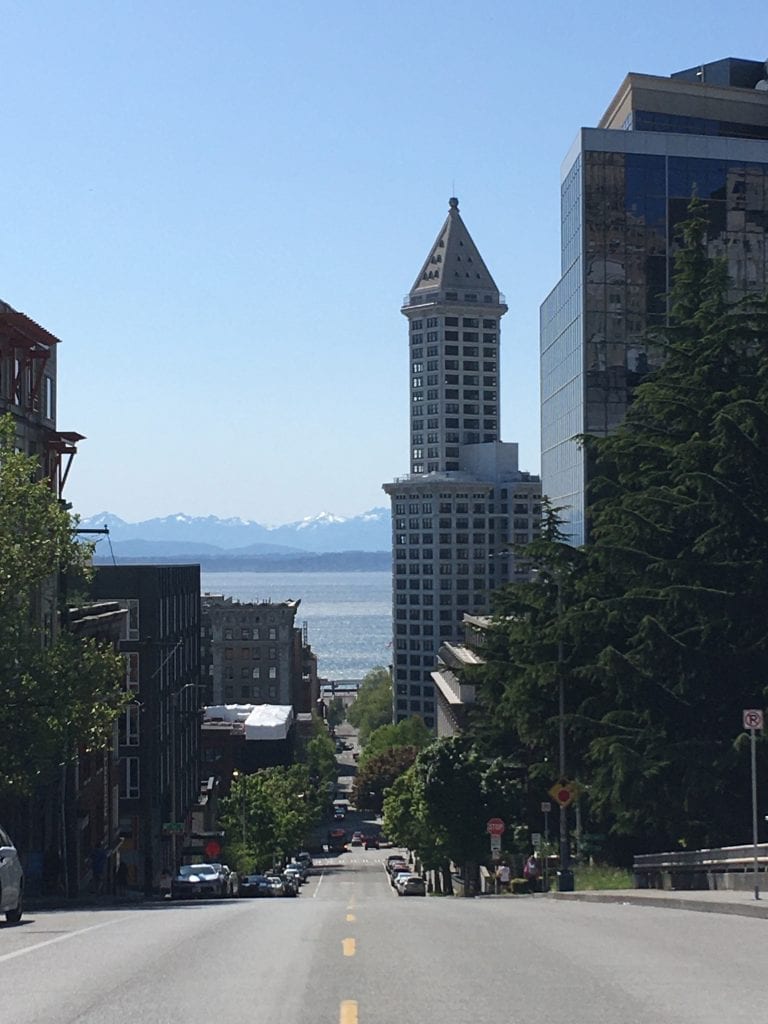
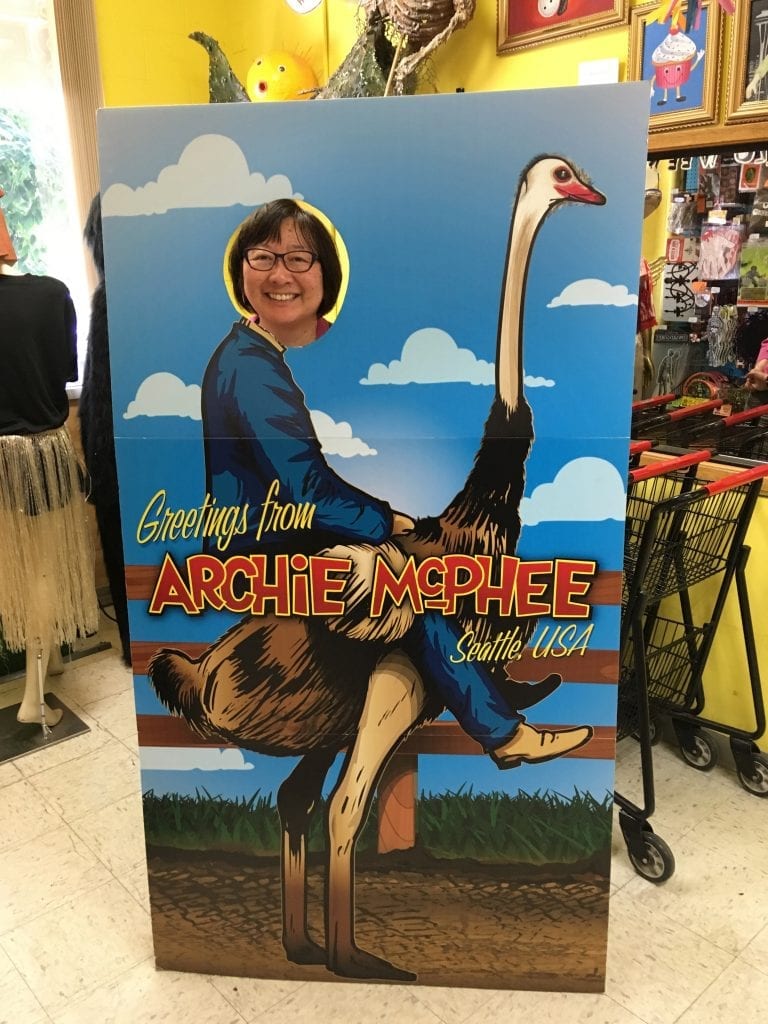
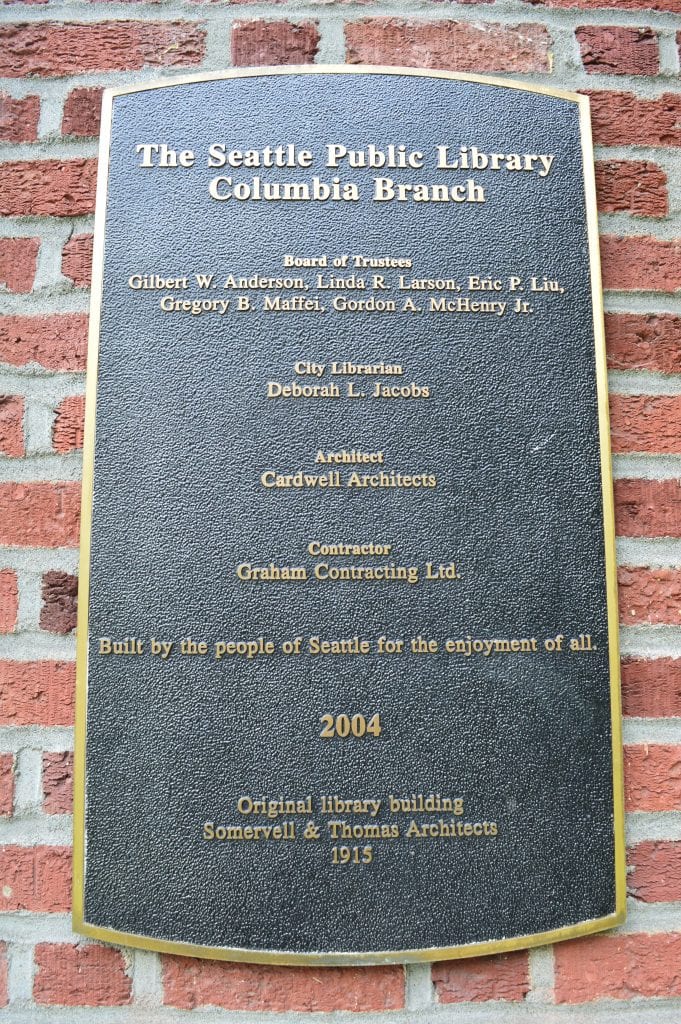
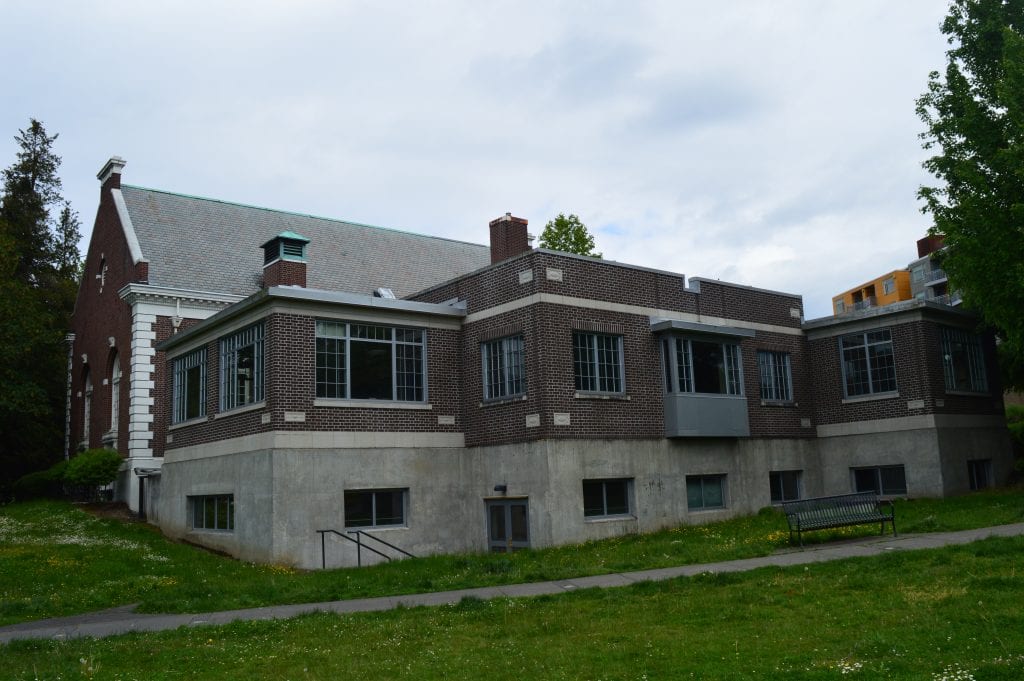
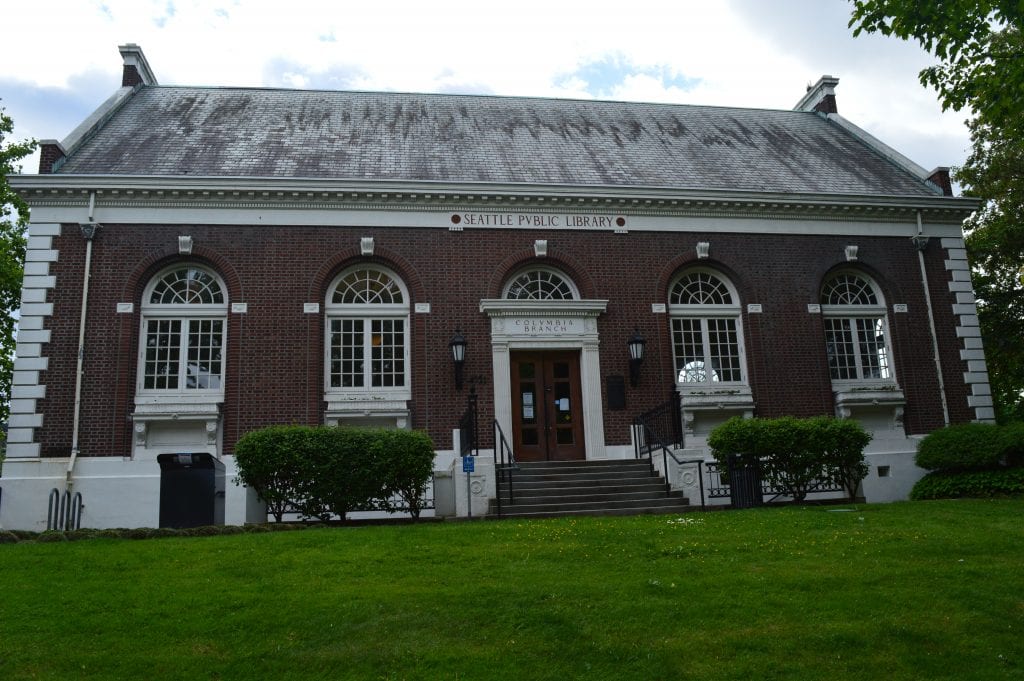
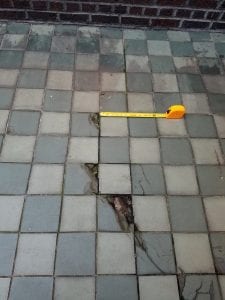 replace the broken ones on the front porch. Our master tile craftsman suggested we tear it all up and salvage what we could. He would then install a different tile in the middle, and use the old tile to do a border. But we didn’t even know what kind of tile it was! We consulted experts who insisted it was slate – it delaminated on cleave lines the way slate does. We even had a man stop by who said he could get us slate to match – just a complete stranger who happened see us working – so we hung onto that hope for a couple of years!
replace the broken ones on the front porch. Our master tile craftsman suggested we tear it all up and salvage what we could. He would then install a different tile in the middle, and use the old tile to do a border. But we didn’t even know what kind of tile it was! We consulted experts who insisted it was slate – it delaminated on cleave lines the way slate does. We even had a man stop by who said he could get us slate to match – just a complete stranger who happened see us working – so we hung onto that hope for a couple of years!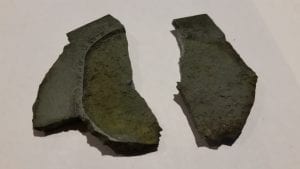 In 2014, we thought we finally had a match: quarry tile, made in Spokane. Sadly, it was not to be, as the manufacturer did not do custom matches and their samples were not a match for our tiles. At that point we began to think that doing the carpet tile inlay was our only option.
In 2014, we thought we finally had a match: quarry tile, made in Spokane. Sadly, it was not to be, as the manufacturer did not do custom matches and their samples were not a match for our tiles. At that point we began to think that doing the carpet tile inlay was our only option.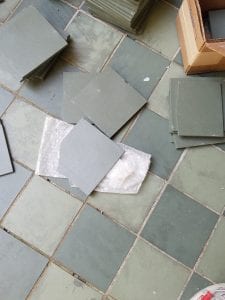 May 15, 2018—the day was finally here for tile to be laid. Opening the boxes revealed a bunch of broken tiles! So much time had gone by, it was too late to file a claim with the shipper. But the wonderful people at Tile Heritage were so gracious, they sent replacements and we were able to get the job done. Well, almost done – we had to wait for the additional tile to be manufactured and shipped. The tiler installed all he could, and when the new batch came he finished the job and grouted the whole area to match. Looking at our porch now, it’s hard to remember how it looked for all those years. But that’s what pictures are for!
May 15, 2018—the day was finally here for tile to be laid. Opening the boxes revealed a bunch of broken tiles! So much time had gone by, it was too late to file a claim with the shipper. But the wonderful people at Tile Heritage were so gracious, they sent replacements and we were able to get the job done. Well, almost done – we had to wait for the additional tile to be manufactured and shipped. The tiler installed all he could, and when the new batch came he finished the job and grouted the whole area to match. Looking at our porch now, it’s hard to remember how it looked for all those years. But that’s what pictures are for!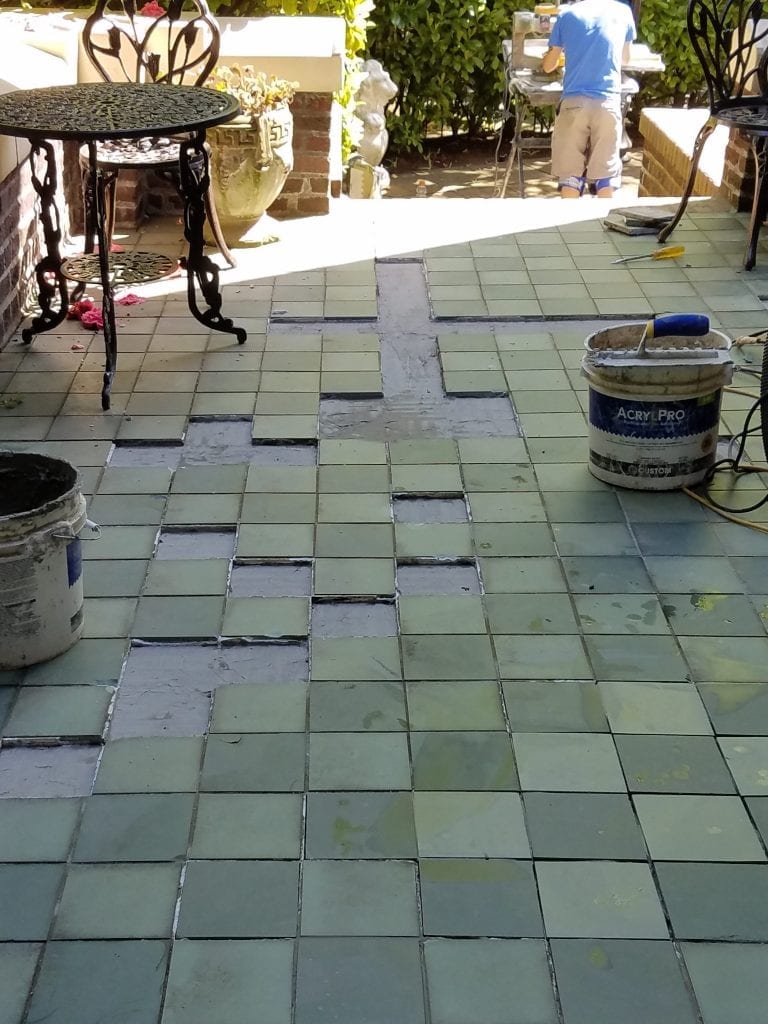

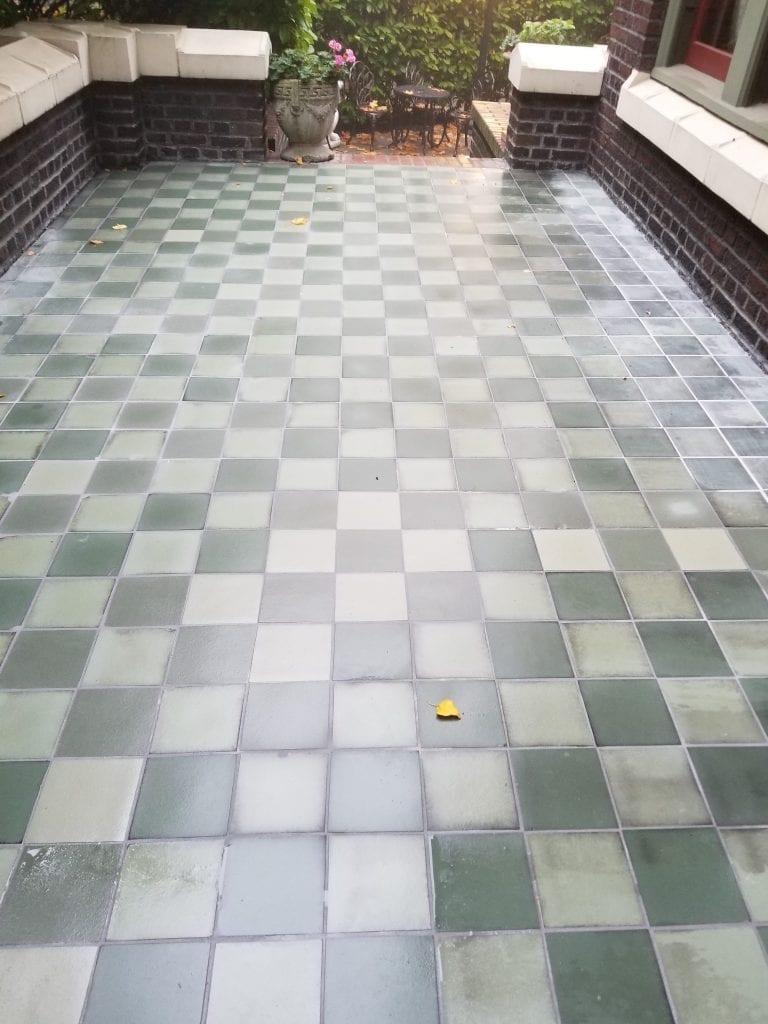
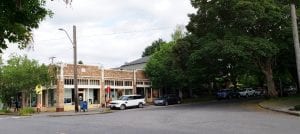

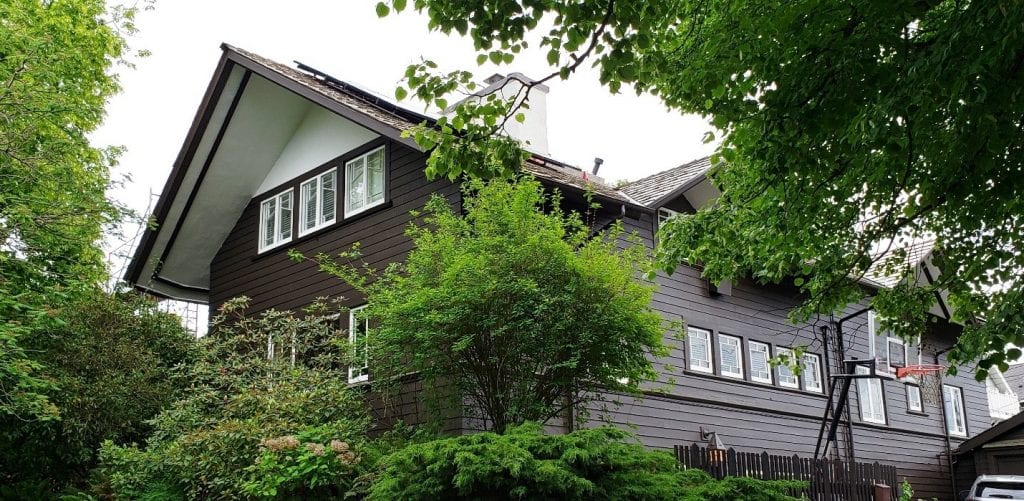

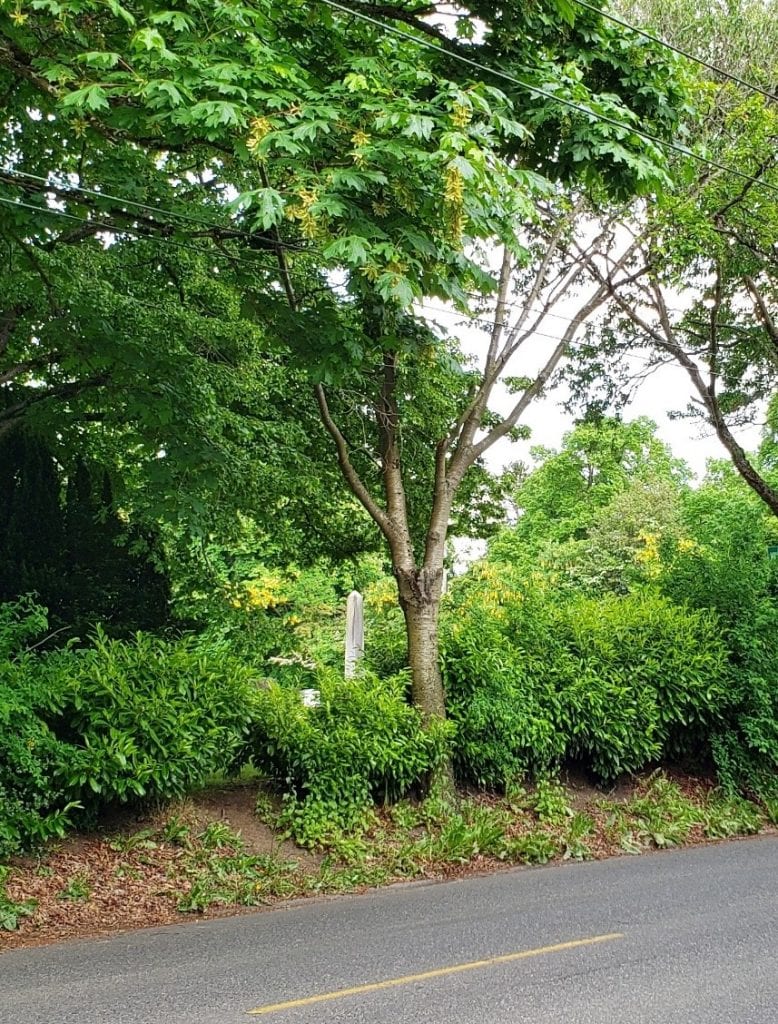

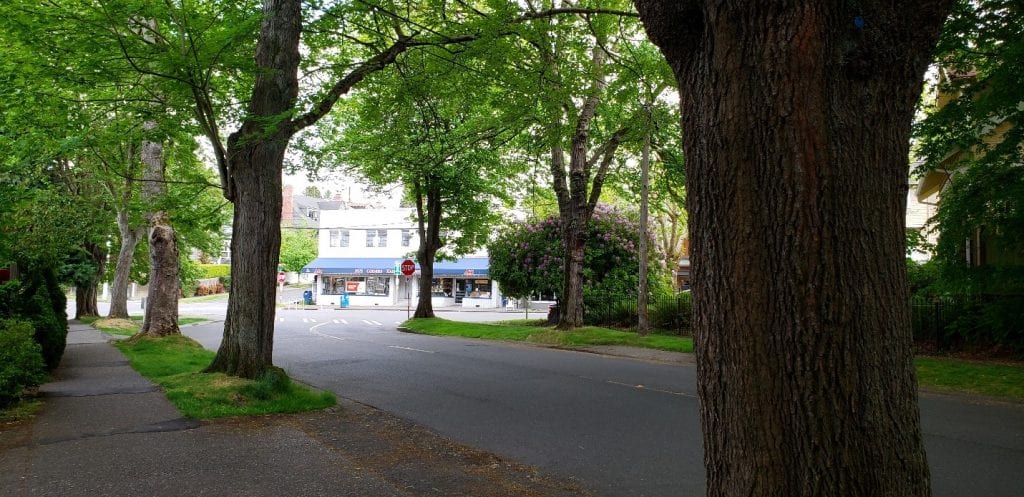
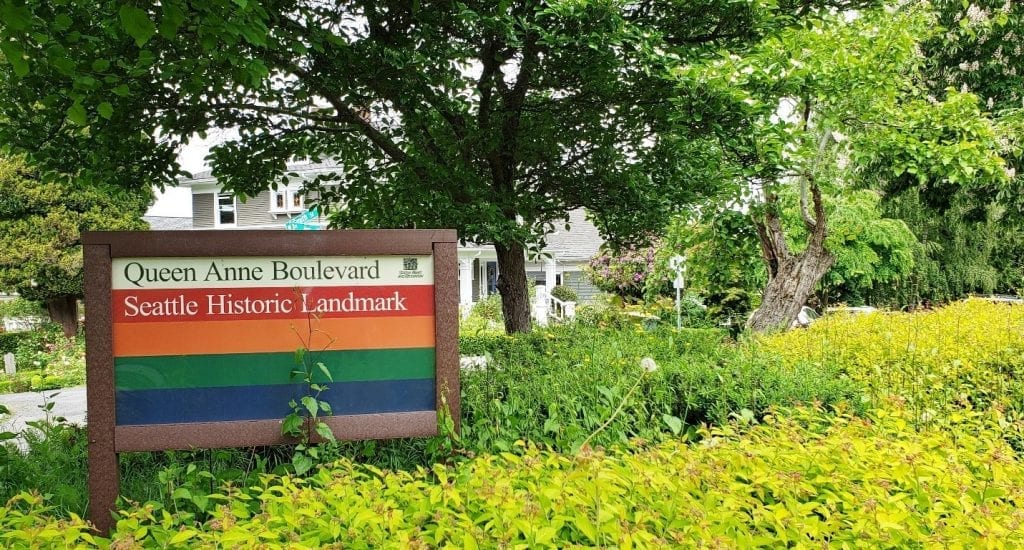
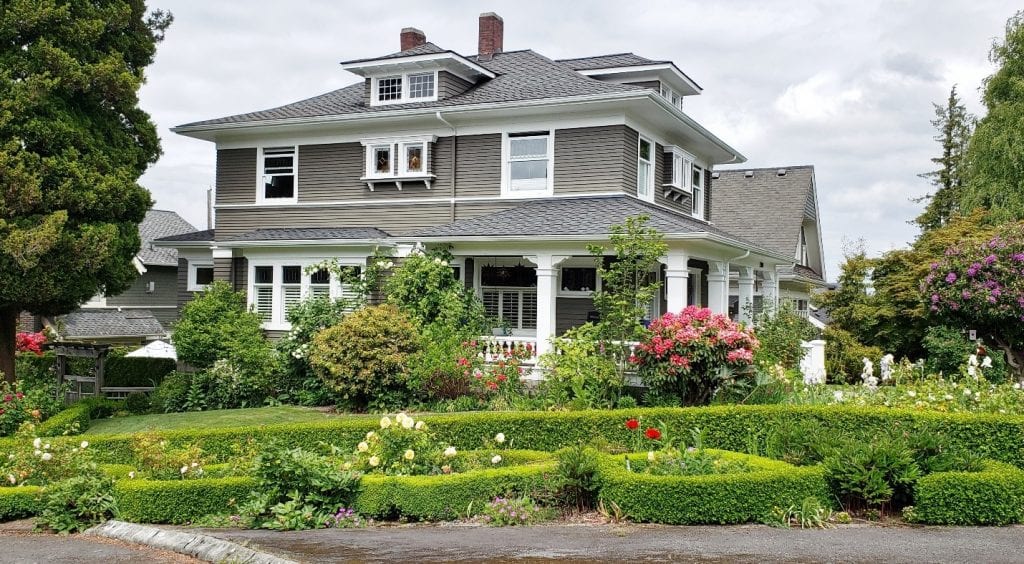





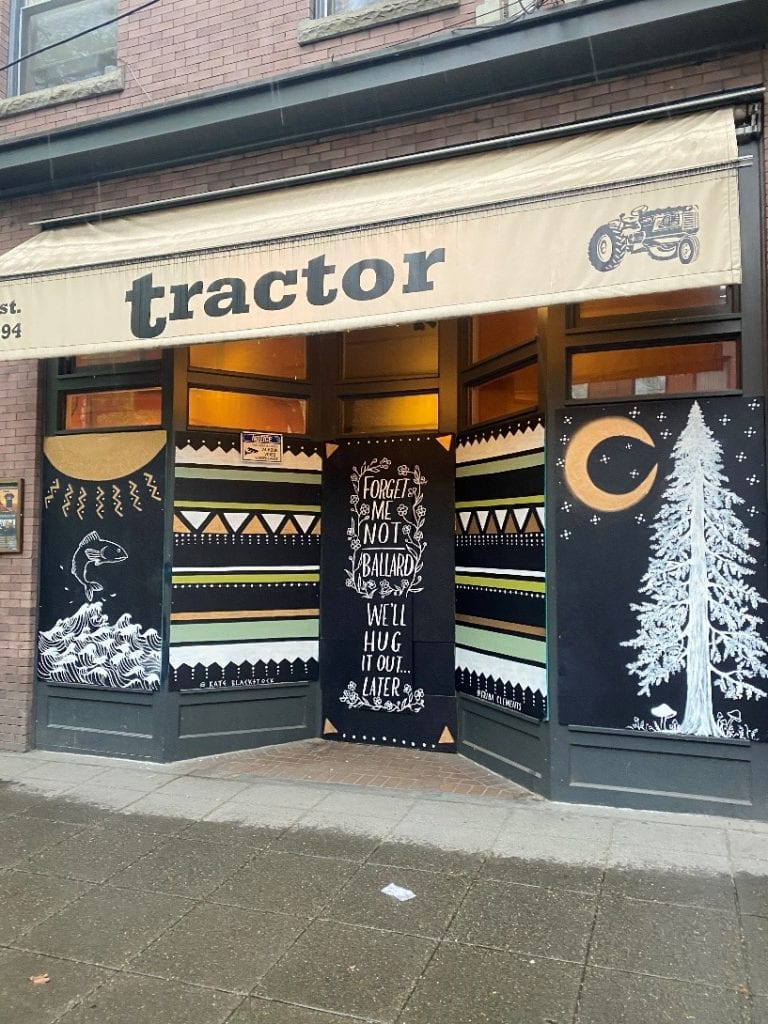
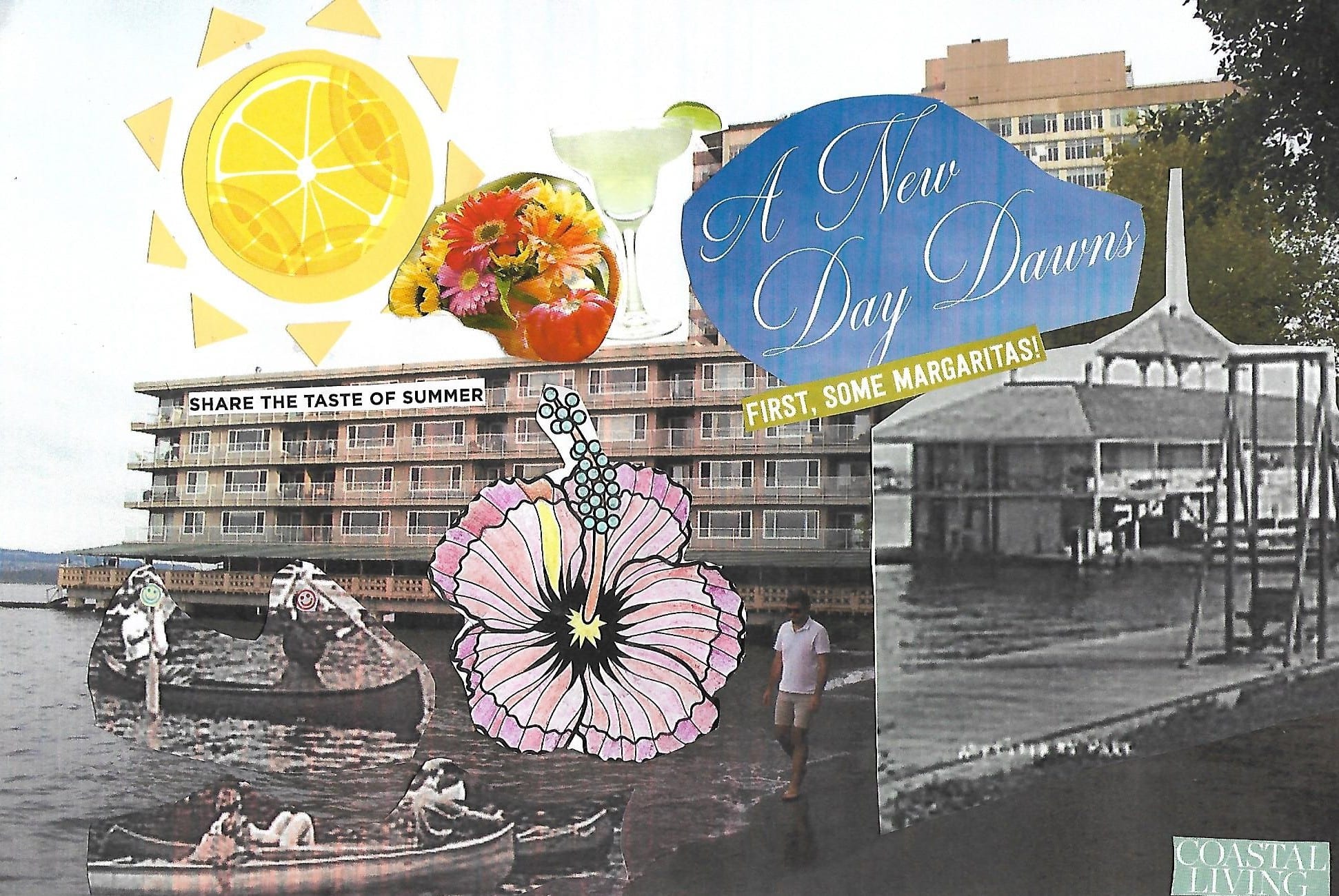

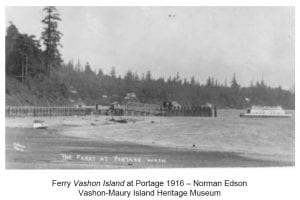 Tramp Harbor has played an important role in the development of the Island. Vashon’s first automobile ferry dock was built on Tramp Harbor soon after a new highway was built connecting Seattle and Des Moines in 1916. This new car dock was located between two existing passenger docks at Portage and Ellisport that served the “Mosquito Fleet.” In 1922, instead of sending cars from Tramp Harbor to Des Moines, then driving north to Seattle, traffic was directed straight downtown to Colman Dock from a newly constructed dock on the north end of Vashon. (My parents will beg and plead with anyone who cares to listen, now that the West Seattle Bridge is closed, to once again re-direct cars to Colman Dock!) After cars began to leave the island from the north end, the Tramp Harbor dock was leased by the Standard Oil Company and was repurposed to bring gasoline, kerosene, oil, and diesel fuel to Vashon Island. The dock was used for this industrial purpose until the mid-1980s, when the dock was once again re-purposed and opened as a public fishing pier.
Tramp Harbor has played an important role in the development of the Island. Vashon’s first automobile ferry dock was built on Tramp Harbor soon after a new highway was built connecting Seattle and Des Moines in 1916. This new car dock was located between two existing passenger docks at Portage and Ellisport that served the “Mosquito Fleet.” In 1922, instead of sending cars from Tramp Harbor to Des Moines, then driving north to Seattle, traffic was directed straight downtown to Colman Dock from a newly constructed dock on the north end of Vashon. (My parents will beg and plead with anyone who cares to listen, now that the West Seattle Bridge is closed, to once again re-direct cars to Colman Dock!) After cars began to leave the island from the north end, the Tramp Harbor dock was leased by the Standard Oil Company and was repurposed to bring gasoline, kerosene, oil, and diesel fuel to Vashon Island. The dock was used for this industrial purpose until the mid-1980s, when the dock was once again re-purposed and opened as a public fishing pier.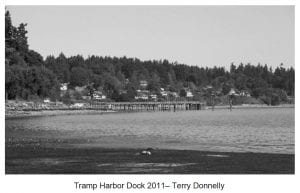 We, and so many other Islanders, spend many summer days at KVI Beach and on the protected waters of Tramp Harbor. Since our house faces the beach, it is the first thing we see when we get up and the last thing we see when we go to bed. With dogs playing fetch, the inlet off the south side of the beach being the perfect place to paddleboard, and an endless amount of beach glass you can find amongst the rocks, KVI is one of the most popular beaches on Vashon Island. With the beach and harbor being just a short walk from our home, we feel lucky to get to grow up in this magical place.
We, and so many other Islanders, spend many summer days at KVI Beach and on the protected waters of Tramp Harbor. Since our house faces the beach, it is the first thing we see when we get up and the last thing we see when we go to bed. With dogs playing fetch, the inlet off the south side of the beach being the perfect place to paddleboard, and an endless amount of beach glass you can find amongst the rocks, KVI is one of the most popular beaches on Vashon Island. With the beach and harbor being just a short walk from our home, we feel lucky to get to grow up in this magical place.